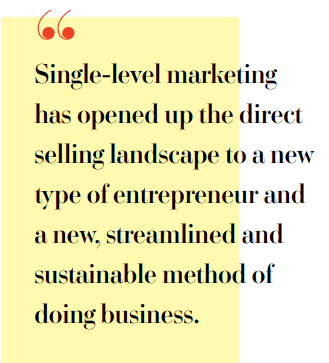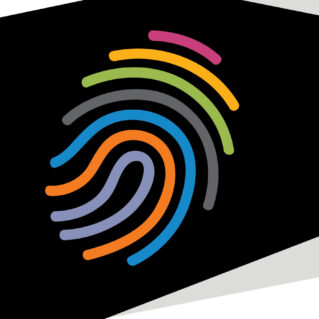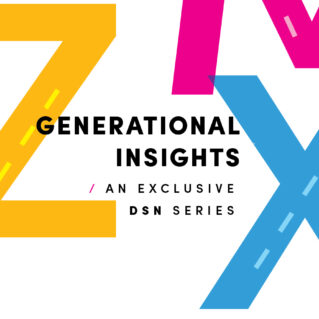Focused on selling, not recruiting, these direct sellers are looking to the future.
Direct selling is not a one-size-fits-all proposition. The flexibility and freedom provided by the opportunity have always been important elements of the channel’s appeal to aspiring entrepreneurs. Essentially, there are four basic direct selling models.
1. Direct-to-consumer marketing
Brands selling directly to the end customer, such as online purchases made on a company’s website.
2. Single-level marketing
Independent sales representatives acting as distributors for a brand and earning a commission from the sales they make. Affiliate marketing programs that only pay commission on the distributor’s sales as opposed to downline sales also fit under this umbrella.
3. Multi-level marketing
The same premise as single-level but distributors often make more money from recruiting new team members into their downline than they do from selling products.
4. Super-affiliate marketing
A hybrid version of single- and multi-level where influencers are paid on one additional level of sponsorship and recruiting.

The multi-level model continues to come under increasing scrutiny from the Federal Trade Commission (FTC), the media and the public. This pressure has caused the prominence and popularity of single-level sales models to rise.
Many new direct sales companies are avoiding the “MLM” stigma and focusing instead on building a single-level direct sales program, paying their sales force strictly on selling—not recruiting. Several established companies have also made this pivot or have introduced supplemental affiliate programs that provide an option for entrepreneurs not interested in more traditional direct selling opportunities.
Single-level marketing has opened up the direct selling landscape to a new type of entrepreneur and a new, streamlined and sustainable method of doing business. The benefits positively impact both customers and companies as well as the independent distributors.

For customers, the interaction with the brand could lead to longevity and loyalty. The connection forged between an influencer and customer feels more real and more personal. Customer service can also be improved as there are fewer layers between customer and company.
There are several key benefits for companies as well. There is more exposure and control of the brand when it is not filtered through a retailer. As the past few years have taught us, brick-and-mortar locations offer challenges that are often out of a brand’s control. Online sales through affiliates keep customers engaged even when they can’t shop at a store. The single-level option also improves the amount and value of customer data, allowing brands to grow their database and sharpen their purchasing insights.
Success Stories
As direct selling continues to evolve to meet changing customer needs and expectations, the path new and existing companies take evolves as well. We’ve compiled this capsule, high-level view of some of the established and emerging brands that are finding success with single-level or super-affiliate approaches.
After bankruptcy, Longaberger reinvented itself in 2019. Abandoning their traditional party-plan approach, the company emerged as a digital-savvy social commerce brand. While baskets remain the star of the Longaberger show, the company expanded its product line to include artisanal home goods as well as furniture, spices, coffee, jewelry and other hand-crafted products.
But while the product line expanded, the opportunity was simplified into a two-tier organization. Stylists pay $49 to join the business, then earn 20 percent of every sale they refer to the company, as well as receiving a 20 percent discount on their own Longaberger purchases. If others join their team, the stylists earn 5 percent from their sales.
One of the results of AdvoCare’s settlement with the FTC in July of 2019 was the revision of their business model to single-level distribution paying compensation based solely on sales to direct customers and supplemental bonuses. While this change disrupted the way long-time independent distributors did business and earned profits, the positive results included creating a more sustainable business model and ending the ongoing dispute with the FTC.

Lovlei is a beach-inspired women’s clothing line based out of California but with undeniable Aloha spirit in its mission and merchandise. The single-level compensation model offers a 40 percent commission for Brand Ambassadors and Influencers. Customers also enjoy free shipping on orders over $125 and a 10 percent discount on all first orders over $100. Brand Ambassadors (distributors) also receive 10 percent on purchases made by people that they introduce to the brand along with other perks and discounts. Additionally, Lovlei also creates coaching positions for influencers who can help their customers explore their interests in things like yoga, jewelry making and other pursuits related to the brands relaxed, beach-y vibe.
A great example of an up-and-coming super affiliate model is FASTer Way to Fat Loss, a virtual fitness and nutrition company teaching clients how to burn fat and live healthier through intermittent fasting, carb cycling, macro tracking, whole food nutrition, strategic workouts and a positive mindset.
The company pays 50 percent commission to their certified coaches and a one-level referral fee of 10 percent on coaches that they recruit. FASTer Way has served nearly 200,000 clients since its creation in 2016.
Future Focused
As a channel, direct selling is making changes to gain credibility and viability as a career path for aspiring entrepreneurs. By shedding the outdated methods and structures of the past and embracing a more progressive, digitally focused single-level or super-affiliate business structure, the channel is poised to grow forward.
From the September 2022 issue of Direct Selling News magazine.


